How to choose an orthosis on the knee? How correctly to put an orthosis on the knee?
In diseases of the knee joint and trauma it is important to reduce the load and limit the mobility of the damaged area to avoid the occurrence of pain, swelling and avoid complications. For this, an orthosis on the knee is used, which ensures a reliable fixation. However, before purchasing this product, you need to study the technical characteristics of each type, indications, contra-indications and rules for the use of the product.
Types of retainers
Knee brace is an orthopedic product that fixes the joint in the required position. It is indicated for use in people with age-related bone diseases, injuries, and during rehabilitation after surgery. Fixers are often used by athletes during training and competitions. 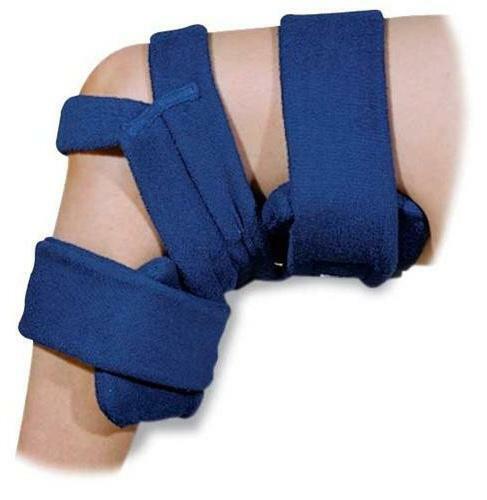
The variety of models differing in their functionality, technical characteristics and cost, allows you to choose the product with the optimal parameters for each person. There are movable( hinged) and fixed( tutor) mechanisms.
There are several types of orthosis, differing in the type of impact on the joint:
- fixing;
- corrective;
- compensating;
- unloading.
Fixing is designed to ensure complete immovability of the joint for a qualitative restoration of tissues.
Corrective is a rigid or semi-rigid product designed to correct the movement of the knee and normalize its position.
Compensating is used in case you need to redistribute the load. Designed to eliminate deformation.
Unloading helps to redistribute the load, facilitates the movement of the joint and reduces the likelihood of a traumatic impact.
In addition, the knee orthosis can be soft, made of fabric materials, or rigid, equipped with hinges. Rigid often require the use of additional soft inserts.
Functionality of orthosis on knee
Knee brace helps to improve and stabilize the joint and, depending on the model, helps to reduce painful sensations or ensure complete rest of the damaged area. The functions of each species are different. For example, compensating species replace and perform the function of damaged parts of the joint. 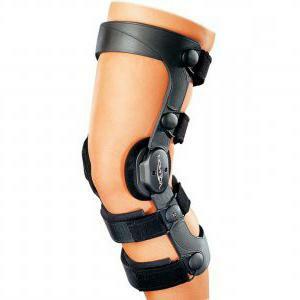
Durable fixing orthopedic product provides:
- reduction of soreness and inflammation;
- peace of the damaged area;
- recovery of the reference function;
- conditions for rapid recovery;
- offset correction.
Corrective dentures help to ensure gradual elimination of deformation of the damaged area, and special unloading knee pads reduce the load on a certain area.
Indications for use
Before using the orthosis for knee joint stabilization, one should consult a phlebologist and angiosurgeon. These doctors will help determine the condition of veins and blood vessels. Only after this, you can select the desired product. The main indications for use are:
- the need for knee restoration after removal of gypsum;
- postoperative period;
- the course of inflammatory processes in the body;
- meniscus damage;
- sprain or ligament injury;
- age changes;
- sports competitions and training.
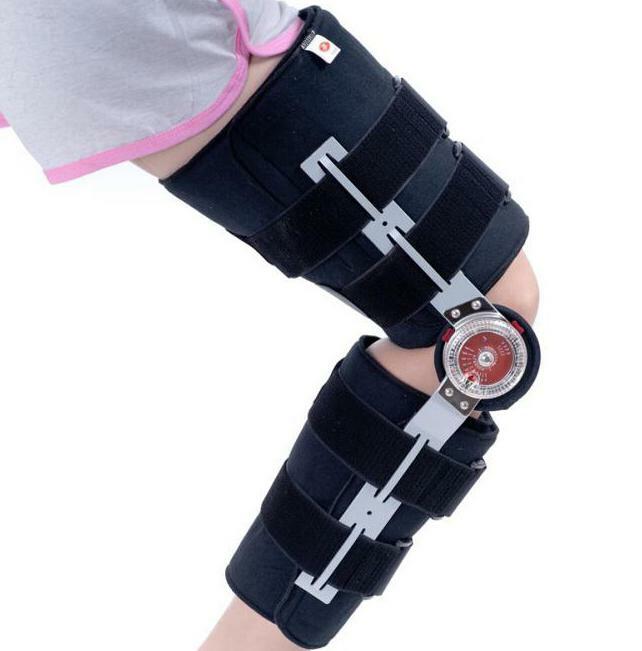
Orthoses are applied from the time when the damage occurred, and until the full recovery. In this period, there is treatment and rehabilitation. And many products are used around the clock, if there is evidence.
What materials are used for the manufacture of
Modern types of orthopedic products are made of various materials, namely:
- cotton;
- Lycra;
- neoprene;
- nylon;
- spandex.
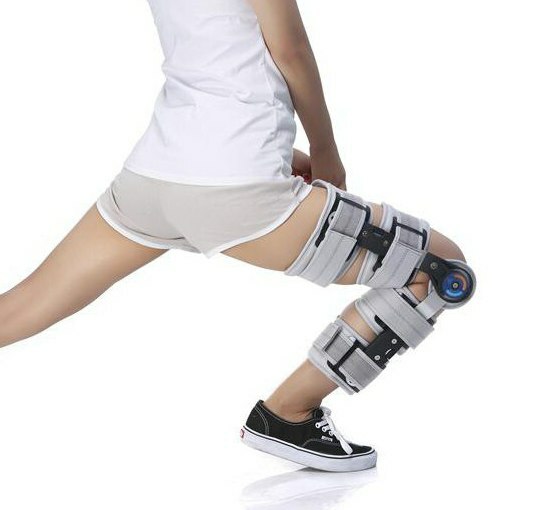
Cotton products are designed for long-term use;They are used in combination with synthetic materials to ensure greater elasticity.
Likra is used to create rigid structures without a warming effect.
Neoprene very well passes air and warms the joint well.
Nylon gives the product strength and durability. It is used to make models with easy fixing. The only drawback of this material is that it can provoke an allergy. Also it is undesirable to wear it for a long time.
Spandex is a synthetic elastic thread, combined with other fibers. This material adheres very well to the body and allows air to pass through.
Attachment methods
To determine which orthosis to choose for the knee, you must first examine all available options, as well as adhere to the doctor's recommendations, given the functional purpose and individual characteristics of the person. In addition, you need to select the product and the degree of fixation, so there are such models of orthoses as:
- elastic with easy fixation;
- with spiral stiffeners;
- articulated;
- tutor;
- patellar.
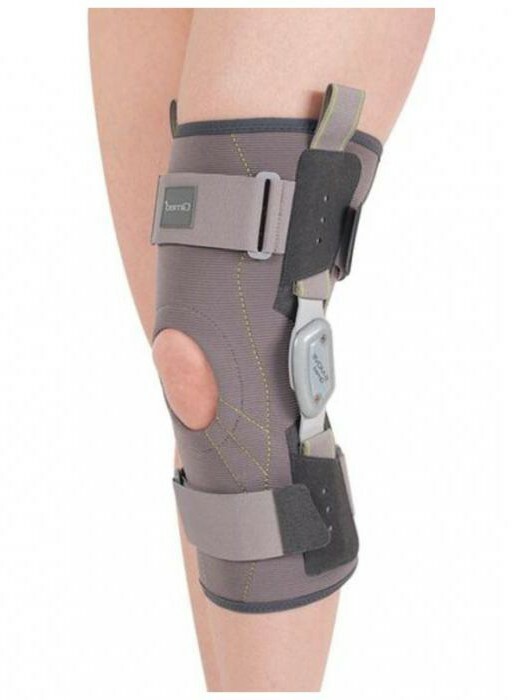
In case of traumatic injury, a semi-rigid or rigid orthosis on the knee is used. In the fixator of moderate stiffness, special ribs and soft elements are inserted into the patella area. This product helps to minimize the load, improve blood circulation and reduce swelling.
In addition, there are special orthoses for athletes who wear injuries or as prevention of knee joint damage. They are made of elastic fabric and are characterized by a low degree of fixation.
How to choose the right product
To date, there is a wide variety of fixators for the knee joint, among which everyone can choose the required option. However, many different factors need to be considered, namely:
- size;
- design;
- material.
If you incorrectly select the orthosis, you can provoke various complications and additional strain on the joint. In the case of insufficiently good fixation, the condition may worsen, and the rehabilitation time will be considerably delayed. With a very strong fixation, there is a violation of blood circulation in the region of the knee joint, and muscle tone will weaken. That's why you need to consult a specialist beforehand. The doctor will conduct the examination and on the basis of this will select the required treatment.
Before buying a product, you must always try it on, resemble it for a while in order to determine the degree of convenience and the possibility of eliminating painful sensations. It is necessary to take into account the quality and strength of the fastening, as this largely depends on the convenience of socks. In modern fixators there are special silicone drops that provide a reliable attachment to the leg.
One of the most important parameters is the size of the product. Therefore, you need to measure the girth of the knee 15 cm above and below the patella.
How to wear an orthosis. Rules for wearing
Regardless of which fixator is selected, with stiffeners or a detachable version, you need to know how to correctly put the orthosis on your knee and wear it. There are several rules for its application, which must be taken into account. 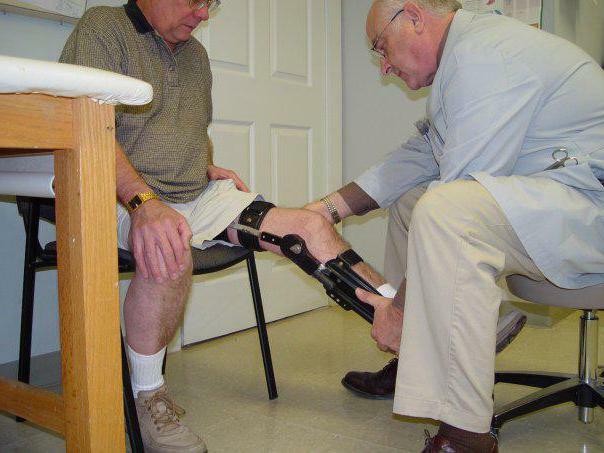
Elastic products should never be worn at all times, they are only worn for a few hours a day. Orthosis on the knee with hinges of a detachable type can not only be worn throughout the day, but also left overnight. It limits limb movements even during sleep, which is especially important in the postoperative period. The period of wearing such a fixator is determined only by the attending physician, however, the orthosis on the knee is hard with hinges to be periodically removed in order to treat the skin with prescribed means.
When using ointments and creams it is forbidden to put on the fixator immediately, you need to give time to absorb the drug. 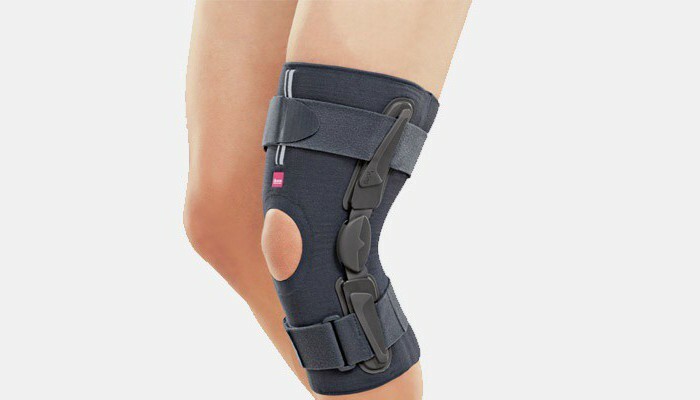
The orthosis for knee fractures is worn only by the surgeon, who preliminarily performs certain manipulations to fix the leg in the required position. During the application of the product, it is necessary to monitor the area of the skin that is covered with a bandage so that irritation does not appear on it.
Contraindications to the use of
Contraindications of the use of a fixative is not so much, but still they are available. Contraindications include:
- varicose veins;
- swelling of the feet;
- presence of irritation or skin rashes.
Before using the product, it is absolutely essential to consult a doctor, so as not to provoke irritation.
